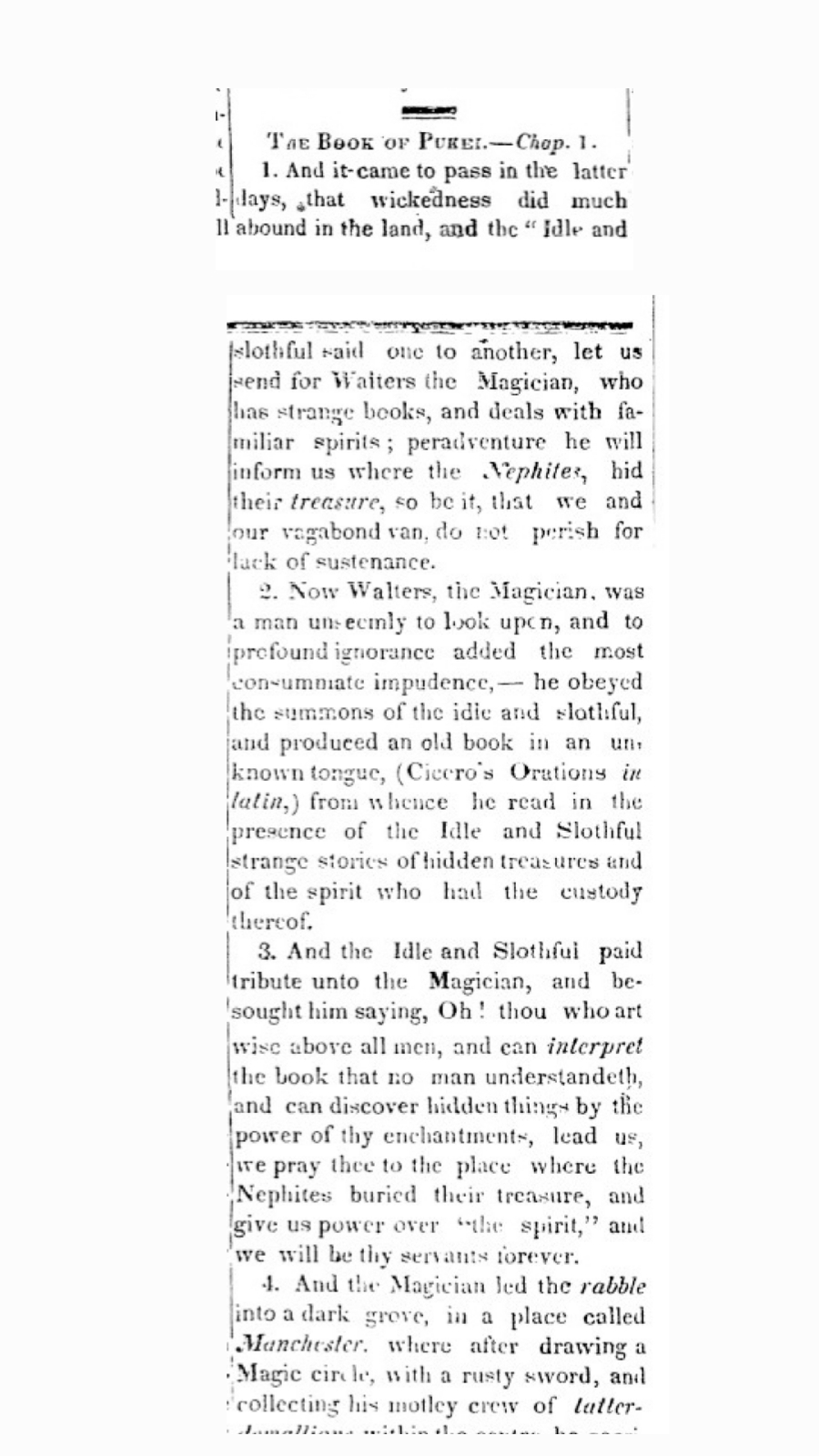As I discussed in my previous post, my theory is that the Book of Mormon is a psuedo-biblical historical fiction. I believe that it is a work which was influenced by other writings in this genre and the history of America.
In order to explore this concept a little more, we need to first understand how widespread these types of works were in the United States. And in order to do that, we need to first go to London, where psuedo-biblicia first captured the public's attention.

 Introduction to Richard II
Introduction to Richard II

In 1740, William of Malmesbury published a book telling the history of the Kings of England in a biblical style, or "the manner of The Jewish Historians." Titled The Chronicle of the Kings of England It was published in multiple editions and spread quickly to the United States.
The book quickly gained notoriety for its unique approach to retelling English history. It was designed to mock the grandiosity and style of biblical texts while recounting the history of England's kings, which gave it a distinctive and enduring appeal. It has been described in modern critiques as a "most successful" example of blending historical narrative with satire.
I'll share some content from the Book below (the 1821 edition) to give you an idea of the style that Dodsely adopted.
The book was even reprinted in an "enlarged version" specifically for young readers.

Cover Page from the 1799 Enlarged Version
 Introduction to Richard II
Introduction to Richard II
Excerpt from Henry V
You get the idea. It's history, but it's presented as biblical. This type of writing has been given multiple names. Including the style of antiquity, biblical style, King James style, etc... I encompass all of into the term "psuedo-biblical." Because it looks biblical, it sounds biblical... but it isn't.
Following the success of the work and others in England and in the States, we see a huge influx of psuedo-biblical works begin to flood newspapers around the country. Similar to the one I shared in my previous post. There were so many in fact, that attempting to interpret all of them or even read all of them would take significantly more effort than one person could devote. Here are several examples from newspapers around the country.
Those three articles are very brief examples, a simple search for "and it came to pass" or other similar phrases on the Chronicling America website, or other databases, will give you an idea of just how many of these there are. You will find (in addition to regular biblical verses) news, fictional stories, satire, history and more. These are found in nearly every newspaper I have searched through in nearly every state.
It should come as no surprise that, despite copywrite laws, the Book of Mormon itself was partially published in a Palmyra newspaper by Abner Cole (under the pseudonym Obadiah Dogberry Esq.)
This style of writing was so common in fact, that Cole initially criticized Joseph Smith in a psuedo-biblical style as the Book of Pukei.
Going forward, this is the context and the environment that we will be reading the Book of Mormon in as I present the rest of my research. To put it plainly:
"When Joseph Smith published the Book of Mormon in 1830, Americans had been producing and consuming faux-biblical texts for close to a century. As we have seen, American colonials, who first merely reissued English pieces, imitating a practice that had originated as a satirical literary genre in the first half of the eighteenth century in Britain, started publishing original pseudobiblical texts in earnest during the Revolution..."
"...While the practice of imitating the biblical style to convey reality appears extraordinary to modern readers, it came naturally to generations of Americans writing and reading pseudobiblical texts, Joseph Smith and his audience included. The numerous texts written in biblical idiom, some of which were, as we have just seen, major and hugely popular literary productions, attest to the vigor of that distinct American tradition." - Eran Shalev, American Zion
Of course, psuedo-biblicia doesn't stop at newspaper publications. In my next two posts I will be discussing several books that circulated America in this style. One in particular I believe had major influence over the Book of Mormon. (And no... it's not the Late War. Although you may find this comparison interesting)
Check Your Understanding:
Test what you picked up from this post.
1. What theory is the author exploring about the Book of Mormon?
2. Where did pseudo-biblical writing first gain major public attention?
3. What was distinctive about The Chronicle of the Kings of England?
4. What does the term “pseudo-biblical” mean in this context?
5. What does the widespread presence of pseudo-biblical writing in early America suggest?
6. Who published portions of the Book of Mormon in a Palmyra newspaper before its release?
7. According to Eran Shalev, why did pseudo-biblical writing come naturally to early Americans?
- Next Post -
The early fascination of Americans and Biblical language.
New here? Consider starting at the first post.












Comments
Post a Comment